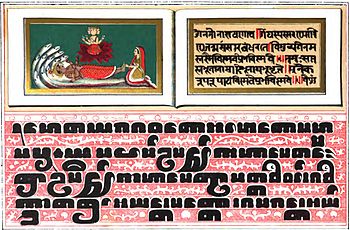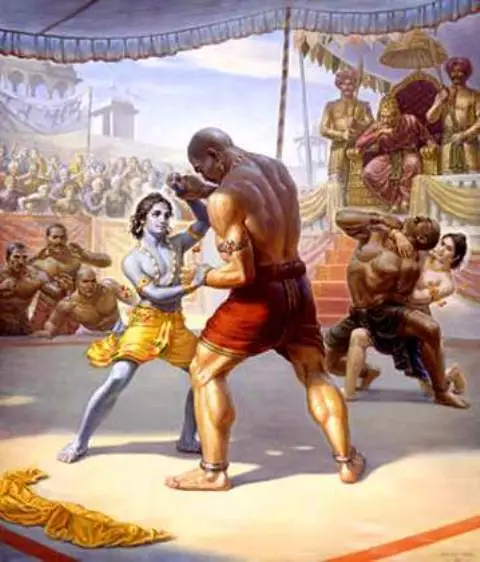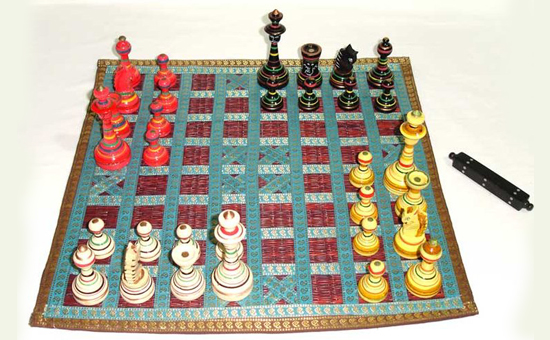TRADITIONAL GAMES
Sports: -strengthen mental and physical ability; improve decision-making skills and develop team spirit; being a weaponless army of the nation.
P.Deepalakshmi
In ancient times, there were no major forms of entertainment, except name a few, like dance, music, etcetera. Of all this, the major form of entertainment turned out to be sports, either indoors or outdoors. There is evidence that tells us about the various sports played back then. Our forefathers discovered an effective method for integrating intellectual thought process development and many other skills that improve our standards with entertainment to make them useful. Some fine examples are chess, carrom, pachisi (Ludo), etc. For physical development, there were sports like archery, wrestling, sword fighting, etc. This is essential for every soldier to be able to fight effectively in battle.
VEDIC ERA
During the third millennium BCE, Dholavira, Gujarat, saw the construction of the oldest stadium in the world with terraced stands. The ancient site has two stadiums that have been found; one is thought to be a ceremonial venue, while the other is a smaller stadium.
Sports were significant in India throughout the Vedic era, too. Ancient India's physical culture was fueled by religious freedom. Duty is in my right hand and the fruits of triumph are in my left, says the Atharvavedic mantra. The phrase "For the Honour of my Country and the Glory of Sport" embodies the same ideals as the classic Olympic Oath. The ancient Indian games chaturanga and Gyan chauper, which served as the inspiration for games like chess and snakes and ladders, were eventually transported to other countries where they underwent further modernization.
Pehlwani, a kind of wrestling that originated under the Mughal Empire, was created by fusing local malla-yuddha with inspirations from Persian varzesh-e bastani.
The sport of modern polo began in Manipur in the 19th century and was played there under the names Sagol Kangjei, Kanjai-bazee, and Pulu. The anglicized form of the latter is known as "polo." In Silchar, Assam, the first polo club was founded in 1833. The Calcutta Polo Club was founded in 1862 and is currently the oldest polo club.
Games have existed since the dawn of humanity. All cultures play games, which are among the earliest forms of human social contact. Games are formally expressed forms of play that let people use their imaginations in ways beyond simple direct movement. Games frequently have unpredictability in the results, established rules, competition, distinct locations and times, aspects of fiction, elements of chance, predetermined objectives, and personal enjoyment. Games preserve and transmit to the next generation the concepts and worldviews of their cultures. Games served as essential instructional aids, social status indicators, and occasions for fostering cultural and social ties. Some games that were formerly only played by royalty and the wealthy became staples of court culture and were also offered as presents. The Mesoamerican ball game and other games like Senet were frequently infused with legendary and ritual religious significance. The political and military elite saw Shatranj and Wéiq (Go) as a tool to cultivate strategic thinking and mental skill while games like Gyan Chauper and The Mansion of Happiness were employed to offer spiritual and ethical precepts Dutch cultural historian Johan Huizinga believed that playing games were a necessary precondition for the development of human cultures in his 1938 book Homo Ludens. Huizinga believed that playing games were something that was "earlier than culture, for culture, however ill-defined, always presumes human society, and animals have not waited for the man to teach them how to play." Huizinga viewed games as the foundation for more complicated human endeavors like language, law, warfare, philosophy, and the arts. There were many different dice games and other board games played in ancient India. In the Indus Valley Harappan culture, dice with square and oblong faces were frequently used (c. 2300 BC). In monasteries and other Buddhist sites, gambling dice have been discovered during archaeological digs. The Rig-mention Veda's of the use of dice is the first written reference to games in India (c. 1000 BC). Dice games were common among Kings and other royalty, according to texts like the Mahabharata, and they also served ceremonial reasons. Cowry shells were frequently used as well.
PALI CANON
 |
| PALI CANON |
A collection of games from the Pali Canon that Buddhist monks were forbidden to play, the list of Buddha games (about 500 BC), is another early example. This collection includes dice games, ball games, floor diagram games (one called Parihârâpatham is comparable to hopscotch), games on boards with 8 or 10 rows (Ashtapada and Daapada), and games that utilize them. Race games included Ashtapada and Daapada.
The precursor to chess, chaturanga, which means "quadripartite" and "army," may have originated in the Indian subcontinent or Central Asia during the Kushan (30–375 CE) or Gupta (320–550 CE) eras from a combination of other game elements and was then spread via the Silk Road to Sassanid Persia (where it was known as Shatranj) and China. It was separated into four sections, or angas, which stood for the four branches of the armed forces. It contained pieces resembling elephants, chariots, horses, and soldiers, just like the actual ancient Indian army, and it was used to plan out offensive and defensive operations.
BOARD GAMES
The word "checkmate" is derived from the game's Persian expression "Shah-Mat," which means "the king is dead." A comparable game called Chaturaji was played with four sides of various colours instead of two, although Al-"India," Biruni's written around 1030 AD, is the earliest source for this four-sided board game. Greek board game petteia may have had an impact on the creation of early Chaturanga, according to chess historians like Yuri Averbakh. The Greco-Bactrian and Indo-Greek Kingdoms may have mixed peteia games with other features.
Carrom is a dice game that is thought to have its roots in the Indian subcontinent. The game is supposed to have been created by Indian Maharajas centuries ago, albeit there is no concrete evidence to support this. An antique glass carrom board was discovered in Patiala, Punjab. After World War I, the board game carrom became very popular, and it is still very popular in India.
To further complicate matters, the game of Snakes and Ladders was formerly called Vaikuntapaali. "Vaikuntapaali," a game that was first played by Hindus. This game may have been played in India as early as the second century AD, according to rumors. Others have attributed the creation of the game to the Marathi saint Dnyaneshwar (also known as Dnyandev), who lived in the 13th century AD. Gyan Chaupar, which translates to "Game of Knowledge," Mokshapat, and Moksha Patamu are other names for this game.
Previously known as Pachisi, the game that is today known as Ludo The board was constructed from jute or fabric. The game of Pachisi was very well-liked during the Middle Ages, as evidenced by the discovery of a Pachisi representation in the Ajanta Caves in Maharashtra. Although cross and circle games like Chaupar and Pachisi may be very old, their history has only been traced back to the 16th century so far. At the court of Mughal emperor Akbar the Great, chaupar was a well-liked game of chance (1556-1605). The emperor enjoyed playing the game and was known to use slaves as playing pieces in the courtyard of his palace.







0 Response to "TRADITIONAL GAMES OF INDIA"
Post a Comment